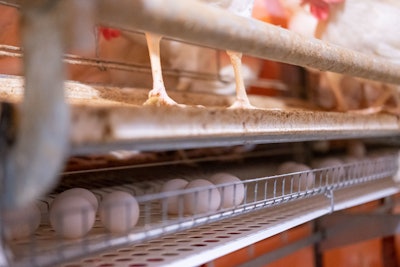
Radio frequency identification (RFID) tags attached to the legs of cage-free layers were able to successfully classify birds as performing in low, medium or high activity categories.
“We found that the birds could be grouped into either very active groups that would move up and down the tiered system all day and inactive birds that would spend the majority of their time in the bottom tier without moving around the house,” stated Dr. Prafulla Regmi, Assistant Professor Department of Poultry Science, University of Georgia, at the 2024 International Production and Processing Expo.
The study found that low activity birds spent the most time on the bottom tier, and medium and high activity birds spent the most time on the middle or top tier. Additionally, low activity cage-free layers were found to have fewer keel bone fractures while medium or high activity layer were found to have more.
Regmi said that the birds with more keel fractures tended to use top-tier perches potentially to avoid other birds due to the pain of the fractures.
Cage-free houses increase the chance of interaction for birds, which also increases the prevalence of feather pecking, cannibalism and other health issues, explained Regmi. Additionally, cage-free house manufacturers all construct their aviary systems differently, making it difficult for producers to know how birds will move between tiers.
The study classified low activity birds as those that made fewer than five daily transitions between different tiers, medium activity birds made 5-12 transitions and high activity birds made more than 12 transitions. Low activity birds made up approximately 25% of the flock, medium were around 50% and high were approximately 25%.
Additionally, based on the activity patterns, Regmi believes there could, potentially, be a social structure associated with movement.
Approximately 80% of the low activity birds were roosting at night on the bottom tier. Medium activity birds were evenly split between the middle and the top tier. The high activity birds were mostly roosting at the top tier. High activity birds roosting on the top tier had much more movement during the night and appeared to be pushing each other off the tier at times, he explained.
Regmi said future studies will focus on whether activity pattern impacts egg production and quality.


















